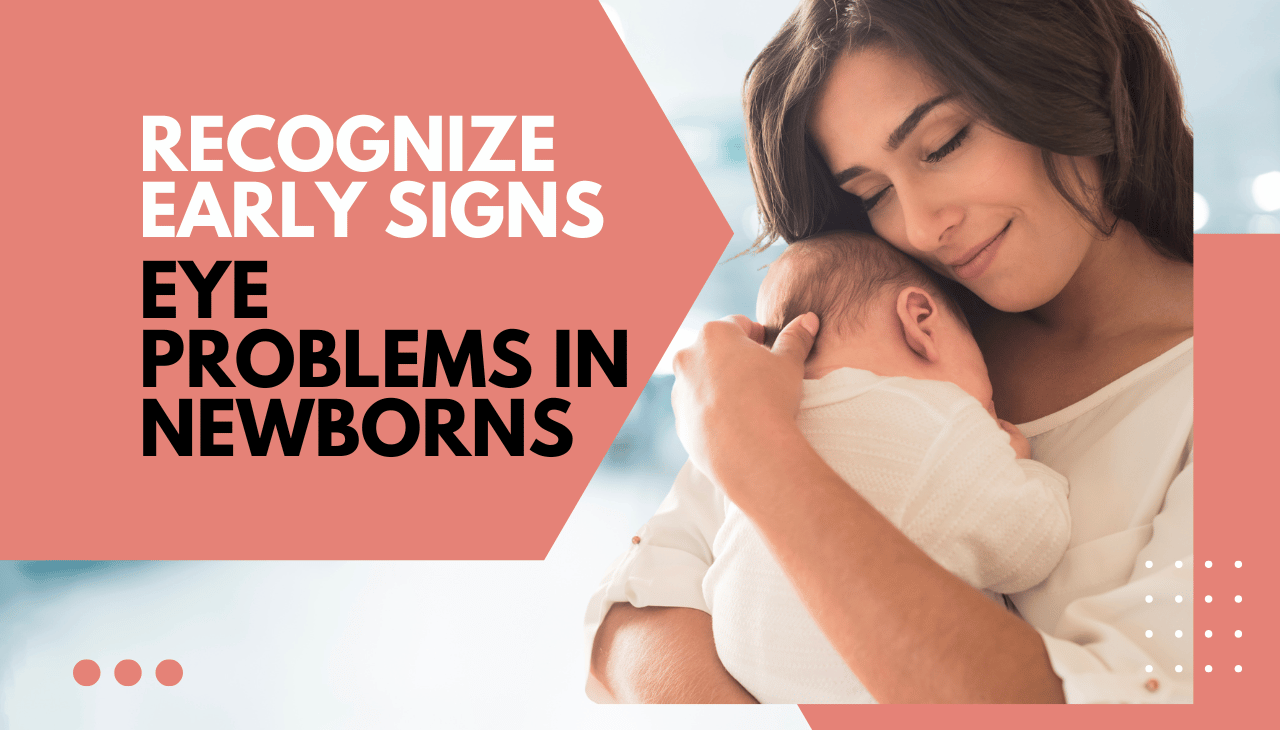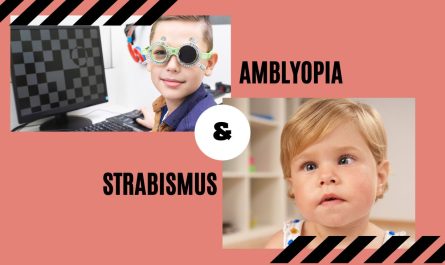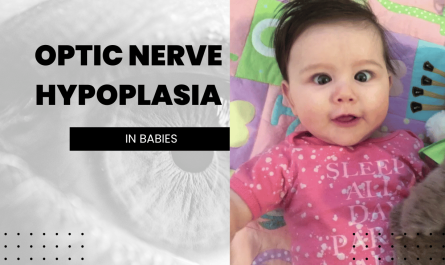Signs of Eye Problems in Newborns
New parents often focus on feeding, sleep, and general health, but eye development is just as important in the first few months of life. A newborn cannot explain if something is wrong with their vision, so parents need to observe carefully. Early detection can prevent long-term vision issues, and this is where guidance from trusted centres like Laxmi Eye Hospital & Institute becomes valuable.. This blog explains the early signs parents should look for, how a baby’s vision develops, and when to consult an eye specialist.
Understanding Vision Development in Newborns
A baby’s vision develops gradually. Knowing the normal stages makes it easier for parents to notice if something seems different.
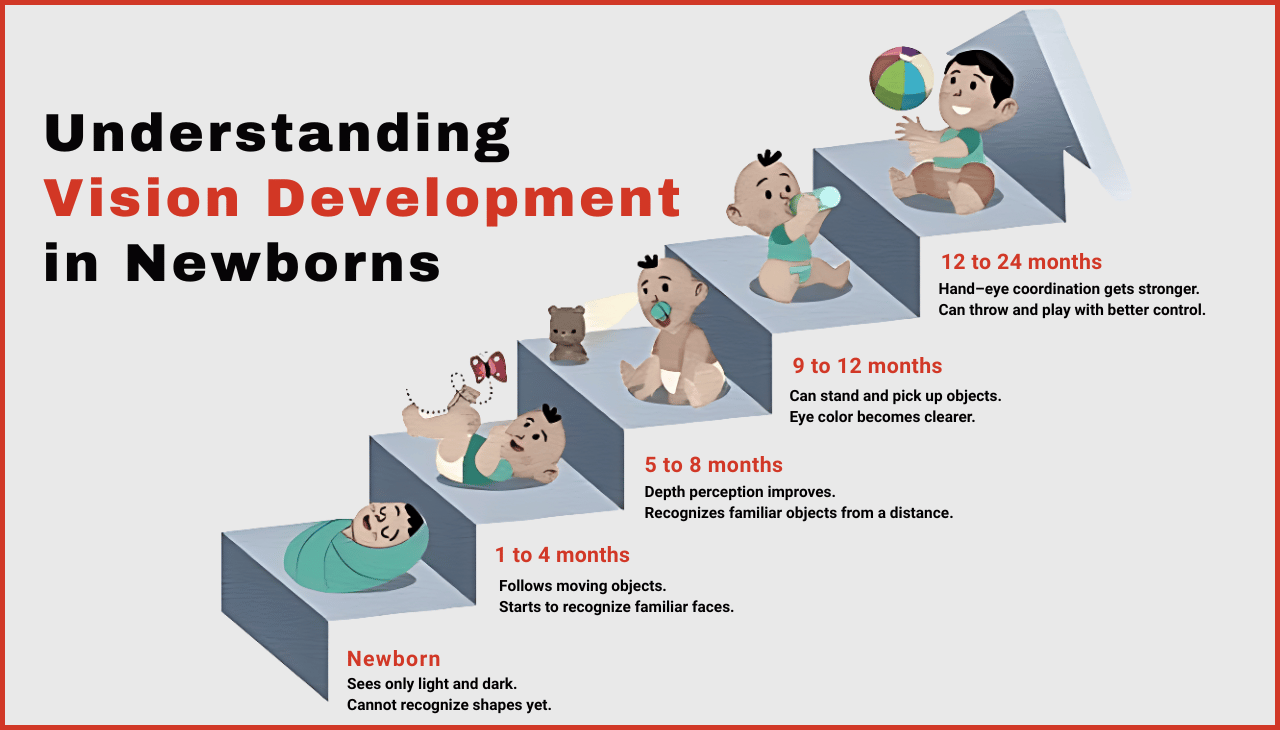
- Newborn: Babies can see light and dark but cannot clearly recognize shapes or patterns.
- 1 to 4 months: They begin to follow moving objects and slowly recognize familiar faces, especially caregivers.
- 5 to 8 months: Depth perception improves. Babies can recognize familiar objects from across the room.
- 9 to 12 months: Babies can stand and grasp objects. Their eye color also becomes more defined.
- 12 to 24 months: Hand-eye coordination gets stronger. Babies can now play, catch, and throw with better control.
If your baby is not reaching these stages around the expected time, it may be helpful to discuss it with a pediatric eye specialist.n of a vision issue.
Common Early Signs That Need Attention

1. Frequent Eye Watering or Discharge
If a newborn’s eyes are always watery, sticky, or have yellow discharge, it may mean:
- Blocked tear ducts
- Eye infection
Persistent discharge should be checked to avoid discomfort or infection spreading.
2. Eyes Not Opening Fully
Some babies may keep their eyes partly closed or show swelling. This could be due to:
- Birth-related swelling (which usually improves)
- Infection or eyelid issues (needs evaluation)
If it does not improve in a few days, a doctor should see the baby.
3. Abnormal Eye Movements
Watch how your baby’s eyes move.
Warning signs include:
- Eyes that move rapidly side to side
- Eyes that do not move together
- One eye drifting in or out often
This may indicate strabismus (crossed eyes) or nystagmus (uncontrolled movements).
Early correction helps prevent permanent vision loss.
4. Lack of Eye Contact or Response to Visual Stimuli
By 6 to 8 weeks, babies usually start making eye contact.
Concern signs:
- Baby does not look at faces
- Baby does not follow a moving toy or light
- Baby does not react when someone makes expressions close to their face
This may be related to vision development delays or neurological conditions.
5. White or Cloudy Appearance in the Pupil
The pupil should appear black.
If you notice:
- A white spot or reflection
- Cloudy or grayish pupil
It may signal serious conditions like cataracts or retinoblastoma (a rare childhood eye cancer).
Immediate medical attention is needed.
6. Unusual Sensitivity to Light
Babies blink in bright light, but if they:
- Turn away strongly
- Cry when light is present
- Keep eyes shut in daylight
It may point to glaucoma or corneal issues. Early diagnosis is important.
7. Family History of Eye Problems
If parents or siblings have:
- Lazy eye (amblyopia)
- High numbers (myopia/hyperopia)
- Childhood cataracts
- Genetic eye disorders
Newborns should receive an early eye screening even if no symptoms are visible yet.
When to Visit an Eye Specialist
Seek medical guidance if:
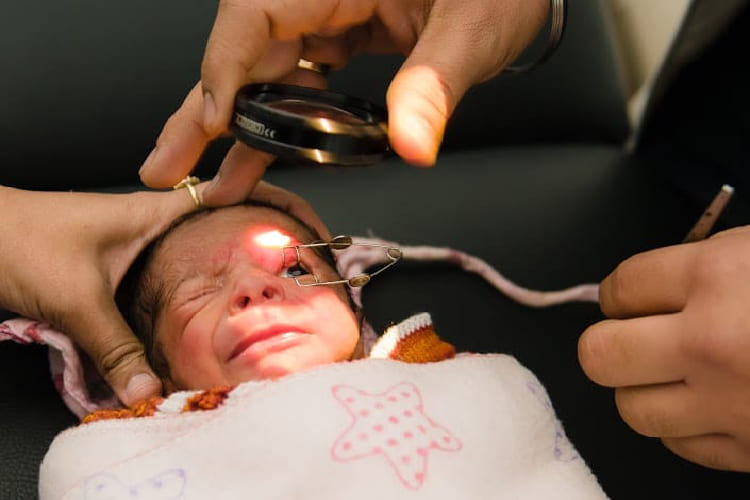
- Something feels “not quite right”
- Symptoms continue for more than a few weeks
- You notice physical changes in the baby’s eyes
A pediatric eye specialist can examine newborns safely and gently. Early treatment prevents long-term problems such as lazy eye, poor depth perception, or even vision loss.
Hospital Introduction
Laxmi Eye Hospital & Institute has multiple branches across Navi Mumbai and Mumbai, making quality eye care easily accessible. You can visit Laxmi Eye Clinic in Dombivli (SS Business Park, Gharda Circle), Laxmi Eye Clinic in Kharghar (Anant CHS, Sector 4), Laxmi Eye Hospital & Institute in Panvel (Mulla Hamid Road, Old Panvel), and Laxmi Eye Institute in Kamothe (near ICICI Bank, Pratik Gardens, Sector 34).
For appointments,
call +91-9594986805 / +91-7303701800 or visit www.laxmieye.org.
FAQs
1. When should a baby have their first eye checkup?
Ideally, within the first 6 months, or earlier if you notice any warning signs.
2. Is it normal for a baby’s eyes to cross sometimes?
Yes, in the first 2 months. If it continues beyond 3 months, consult an eye specialist.
3. What causes blocked tear ducts in newborns?
The tear drainage pathway is not fully open yet. Most cases resolve naturally, but some may need simple treatment.
4. Can poor vision in newborns be corrected?
Yes. Most early vision problems can be treated if found in time.
5. Do newborns need glasses?
Some babies do need glasses for conditions like high refractive errors. The specialist will guide based on examination.
6. What is lazy eye?
Lazy eye (amblyopia) means one eye does not develop proper vision. Early treatment helps restore vision.
7. Is white reflection in the pupil always dangerous?
Not always, but it can be serious. Get it checked quickly.
Conclusion
Parents play an important role in recognizing early eye problems in newborns. Small changes in eye movements, appearance, and responses can give early clues. Timely checkups and treatment protect your baby’s sight and support healthy development. If you notice any unusual signs, visit a pediatric eye specialist without waiting.

